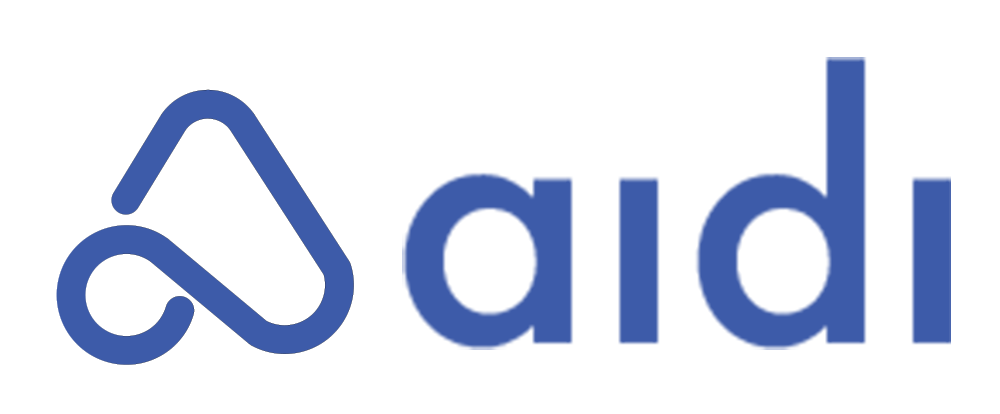Aidi — Founder burnout
Return
Founders are tasked with many responsibilities, especially at the initial stage of building a startup. There’s fundraising to do, product-market fit to achieve, investor and customer relationships to manage, and recruitment and management of employees, amongst other several duties. There’s a high chance of experiencing burnout if breaks are not intentionally scheduled and taken. Some founders do not realize the need for breaks and also do not know what to do when they experience burnout.
This article will detail how to detect and avoid burnout and what to do in cases where burnout happens.
1. How to avoid burnout
Before we delve into the topic of avoiding burnout, let us first define what burnout is. Initially, burnout was viewed as a work-life balance problem and not a workplace issue. However, in 2019 the World Health Organization included burnout in the 11th revision of the international classification of diseases. It defined it as an occupational syndrome, ‘a syndrome conceptualized as resulting from chronic workplace stress that has not been successfully managed’.
In simple terms, burnout can be defined as excessive stress in the work environment that has not been successfully controlled. Prior to this, foremost burnout experts- Christina Maslach, Michael Leiter and Susan E Jackson defined this phenomenon as a ‘psychological syndrome emerging as a prolonged response to chronic interpersonal stressors on the job. They also identified 3 key dimensions of this which are, overwhelming exhaustion, feelings of cynicism and detachment from the job, and a sense of ineffectiveness and lack of accomplishment.
So what causes burnout and how can it be detected? The Harvard Business Review explains that burnout is caused by 3 unsustainable workplace practices which are; excessive workload, misalignment with the values of a startup and overqualification for a job. Additionally, Mayo Clinic highlighted some other causes which include;
- Identifying so strongly with work that you lack balance between your work life and your personal life
- High workload, including overtime work
- Feelings of little or no control over your work
- Monotonous jobs.
It can also manifest in other forms like annoyance, unnecessary irritation, feelings of unachievement, and the burning need to quit building your startup, among others. When a founder experiences work burnout, this soon spreads into other aspects of life.
When it comes to detecting burnout this can be a bit tricky as it is sometimes hard to detect things that we cannot see. For high performers who often meet deadlines and goals, burnout can be subtle. This is because they might still go on and meet those goals and often self-report as engaged even when they are extremely stressed. Therefore, to detect burnout there is a need to ask better questions.
Instead of viewing burnout as something that occurs only when we stop being productive or achieving goals, we can go further to probe, to ask questions on well-being, resilience, efficacy and overall happiness. Do you find yourself less willing to pursue the things that usually interest you? Are you more broody than normal? Are you less enthusiastic about projects, work, and achievements? What is the one biggest frustration you are experiencing, presently? These are some of the questions that you might consider to detect burnout on time. For other founders, they find out that they begin to experience extreme fatigue, panic attacks, hyperventilation and fear. They begin to dread the work they have to do and find little to no motivation to carry out normal, everyday tasks. To avoid extreme exhaustion, what should a founder do?
- Avoid taking on more than you can handle per time:
Founders who are passionate about the solution they are providing often fall into the trap of saying ‘yes’ to every request. Because of this passion they have for their business, they rarely reject anything that is framed as or looks like work. Possessing this ‘do it all’ attitude often times lead them to the burnout path. To avoid this, there is a strong need to develop the capacity to mindfully choose what to do and what to delegate. Taking on only what you should at the time gives room for creativity and increased productivity. It is imperative to also learn to prioritize, creating a scale of preference for each activity. Examine if each task is urgent and must be carried out by you. If not urgent, keep it for another time or delegate it as the case may be.
- Be careful of the productivity cycle:
Our culture encourages hustle. We hear slogans such as ‘time is money’ and so cram so much in so little time. This does not mean that founders should not work hard, after all the aim of a business is to make profit and making profit requires hard work. However, the productivity culture is one that requires an endless cycle and a constant state of doing, of never slowing down, of never resting and an unending to-do list. Towing this path will eventually lead to weariness. Taking off time to replenish and rest does not equal laziness. It means that you take out time to breathe, and block off one or two hours on your calendar to do something creative or less tasking (can be reading, taking a nap, seeing a movie, etc). Do all you can per time but also make room for rest and for reflection.
- Take charge of your time:
It is so easy to accept every meeting request and then add them to a backlog of meetings you already have. Doing this will leave you with a perceived lack of control over your time and schedule. To avoid burnout, it is necessary to enforce boundaries and be in control of your time. This might mean logging off your computer at a designated time and leaving it in the office while going home, blocking off certain times on your calendar to do other non-work tasks, and using scheduling tools to help you manage your time effectively. It also involves the hard part of having difficult conversations. Say you and your co-founder are testing out an MVP and trying to get product-market fit and may have to work longer hours. Taking charge of your time entails that you talk to your cofounder about the crazy hours and reach a win-win conclusion on the times when you will be available and times when you’ll not be, it may also mean employing an extra person to help reduce the workload. It is deciding which tasks are immediate and urgent and which can be done later. For perfectionists who have a hard time believing someone can carry out a task as excellent as they do, this will mean trusting other people and delegating tasks, giving you more control over your time.
- Add physical rituals to your day:
Waking up and dashing to work or your home office isn’t always the best way to start your day. It is perfectly normal to add physical rituals to your day. You will be surprised to know how taking a 10-minute walk around your house or neighbourhood helps you feel refreshed and ready to take on the day. Physical rituals mustn’t always be big or grand, it can be as simple as taking deep breaths every 30 minutes while working. It can be going around to say hello or exchange greetings with your co-founder or staff. It can be jogging or visiting the gym in the evening. You will discover that these activities, though small and insignificant will help you think more openly, give you more time to reflect and think about other things outside work and make it easier for you to take feedback and listen more.
You may read this article when you are already experiencing burnout and past the stage of taking the preventive measures listed above. Here are some tips to help you navigate through this;
- Admit how you feel and prioritize self-care:
Founders may not readily admit to burnout because of the responsibilities they have to bear. In spite of this, admitting to the situation is the first step to recovery. You have to sit and assess how you feel mentally, emotionally and physically. The next step is to care for yourself as opposed to shutting out. Self-care means different things to different people. For some, it is taking leave from work and staying off emails. For others, temporarily quitting social media and the rest, disassociating themselves from the stressors and root causes of burnout and curbing the urge to overwork. Doing this will improve your mental state better and help make the recovery process faster and easier.
- Eliminate the unnecessary:
The next step is to rearrange your role, schedule and time to help you get better. You can start by reviewing your email and calendar communication on a regular basis. Monitoring this will help you patterns, meetings, and discussions that are recurring but aren’t core to your success and that of the business. Perhaps, you sit in every team meeting and review and find this overwhelming. You may adjust the frequency of meetings and restructure the team so you do not necessarily have to be involved in all. Look at your schedule and weed out unnecessary activities that look good on paper but are not instrumental to growth.
- Diminish exposure to stressors:
To reduce exposure to stressors that cause burnout, there’s a need to pinpoint the stressors and diminish your exposure to them or eliminate them permanently as the case may be. This may entail reducing your workload to avoid becoming overwhelmed again, resetting the expectations of colleagues, clients and even family and setting resetting ground roles for working with your staff and co-founder. This will improve your long-term productivity and help protect your health.
- Talk to people:
One effective way of overcoming burnout is to reach out to your strong connections. Find coaches and mentors who you trust and speak to them about your current situation. This helps you feel less alone and affords you the chance to share what you feel with people you trust.





